constituent assembly of india debates (proceedings)- volume vii
constituent assembly of india debates (proceedings)- volume vii
constituent assembly of india debates (proceedings)- volume vii
You also want an ePaper? Increase the reach of your titles
YUMPU automatically turns print PDFs into web optimized ePapers that Google loves.
which neither can get out and within which they must work.<br />
So far I have drawn attention to the difference between the American Federation and the proposed<br />
Indian Federation. But there are some other special features <strong>of</strong> the proposed Indian Federation which<br />
mark it <strong>of</strong>f not only from the American Federation but from all other Federations. All federal systems<br />
including the American are placed in a tight mould <strong>of</strong> federalism. No matter what the circumstances, it<br />
cannot change its form and shape. It can never be unitary. On the other hand the Draft Constitution can<br />
be both unitary as well as federal according to the requirements <strong>of</strong> time and circumstances. In normal<br />
times, it is framed to work as a federal system. But in times <strong>of</strong> war it is so designed as to make it work<br />
as though it was a unitary system. Once the President issues a Proclamation which he is authorised to do<br />
under the Provisions <strong>of</strong> Article 275, the whole scene can become transformed and the State becomes a<br />
unitary state. The Union under the Proclamation can claim if it wants (1) the power to legislate upon any<br />
subject even though it may be in the State list, (2) the power to give directions to the States as to how<br />
they should exercise their executive authority in matters which are within their charge, (3) the power to<br />
vest authority for any purpose in any <strong>of</strong>ficer, and (4) the power to suspend the financial provisions <strong>of</strong> the<br />
Constitution. Such a power <strong>of</strong> converting itself into a unitary State no federation possesses. This is one<br />
point <strong>of</strong> difference between the Federation proposed in the Draft Constitution, and all other Federations<br />
we know <strong>of</strong>.<br />
This is not the only difference between the proposed Indian Federation and other federations.<br />
Federalism is described as a weak if not an effete form <strong>of</strong> Government. There are two weaknesses from<br />
which Federation is alleged to suffer. One is rigidity and the other is legalism. That these faults are<br />
inherent in Federalism, there can be no dispute. A Federal Constitution cannot but be a written<br />
Constitution and a written Constitution must necessarily be a rigid Constitution. A Federal Constitution<br />
means division <strong>of</strong> Sovereignty by no less a sanction than that <strong>of</strong> the law <strong>of</strong> the Constitution between the<br />
Federal Government and the States, with two necessary consequences (1) that any invasion by the<br />
Federal Government in the field assigned to the States and vice versa is a breach <strong>of</strong> the Constitution and<br />
(2) such breach is a justiciable matter to be determined by the Judiciary only. This being the nature <strong>of</strong><br />
federalism, a federal Constitution have been found in a pronounced form in the Constitution <strong>of</strong> the United<br />
States <strong>of</strong> America.<br />
Countries which have adopted Federalism at a later date have attempted to reduce the disadvantages<br />
following from the rigidity and legalism which are inherent therein. The example <strong>of</strong> Australia may well be<br />
referred to in this matter. The Australian Constitution has adopted the following means to make its<br />
federation less rigid:<br />
(1) By conferring upon the Parliament <strong>of</strong> the Commonwealth large powers <strong>of</strong> concurrent<br />
Legislation and few powers <strong>of</strong> exclusive Legislation.<br />
(2) By making some <strong>of</strong> the Articles <strong>of</strong> the Constitution <strong>of</strong> a temporary duration to remain<br />
in force only "until Parliament otherwise provides."<br />
It is obvious that under the Australian Constitution, the Australian Parliament can do many things,<br />
which are not within the competence <strong>of</strong> the American Congress and for doing which the American<br />
Government will have to resort to the Supreme Court and depend upon its ability, ingenuity and<br />
willingness to invent a doctrine to justify it the exercise <strong>of</strong> authority.<br />
In assuaging the rigour <strong>of</strong> rigidity and legalism the Draft Constitution follows the Australian plan on a<br />
far more extensive scale than has been done in Australia. Like the Australian Constitution, it has a long<br />
list <strong>of</strong> subjects for concurrent powers <strong>of</strong> legislation. Under the Australian Constitution, concurrent<br />
subjects are 39. Under the Draft Constitution they are 37. Following the Australian Constitution there are<br />
as many as six Articles in the Draft Constitution, where the provisions are <strong>of</strong> a temporary duration and


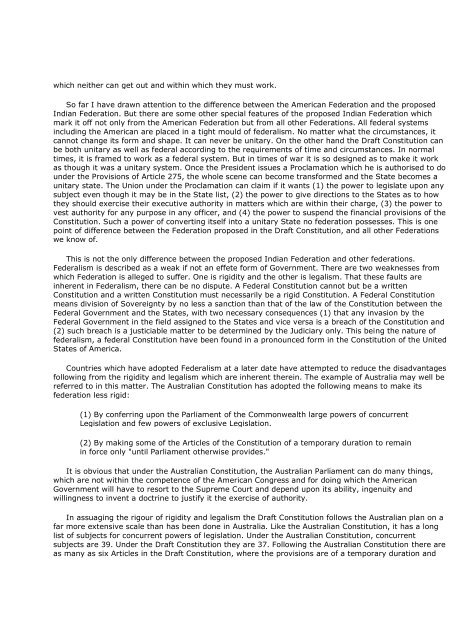
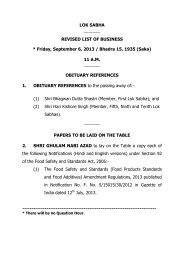
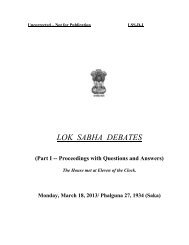

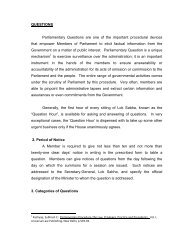
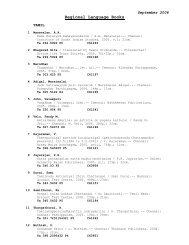

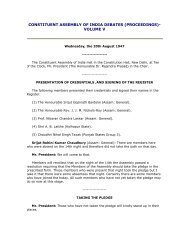
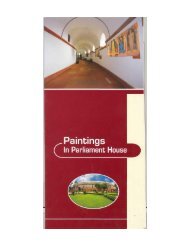
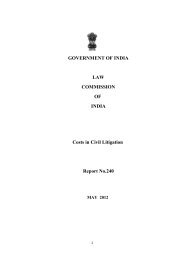
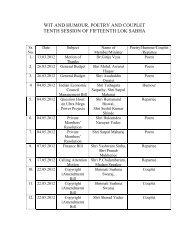
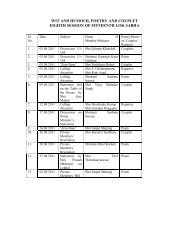

![gÉÉŌ A.]ÉŌ. xÉÉxÉÉ](https://img.yumpu.com/8015720/1/190x245/geeo-aeo-xeexee.jpg?quality=85)
